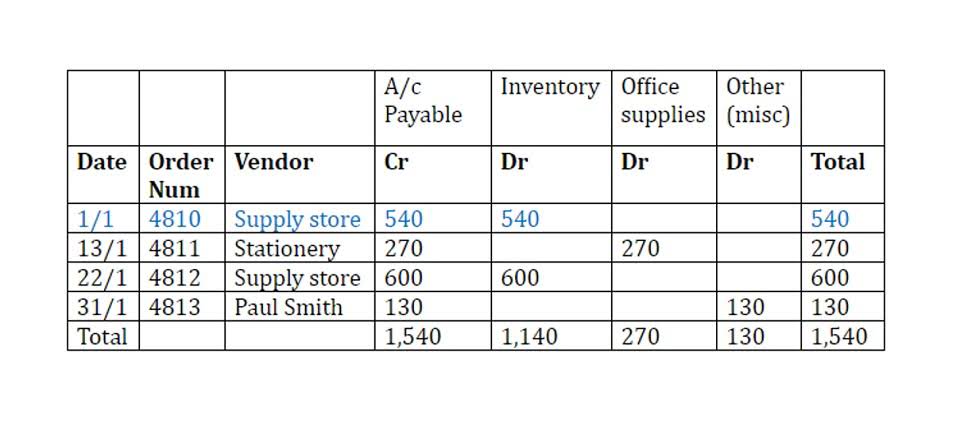
An entry of $500 is made on the debit side of the Capital Account because the owner’s capital in the business has been reduced. Also, a corresponding entry of $2,500 is made on the credit side of the account because the liability to this creditor is increasing. If Pacioli could visit a modern accounts department, he would recognize that his principles were still regularly which transactions are recorded in the accounting system? applied in practice.

Practical Application of Double Entry
Often, these transactions come with applicable eligibility requirements. In single-entry accounting, when a business completes a transaction, it records that transaction in only one account. For example, if a business sells a good, the expenses of the good are recorded when it is purchased, and the revenue https://www.bookstime.com/blog/restaurant-cash-flow-management is recorded when the good is sold. To account for the credit purchase, entries must be made in their respective accounting ledgers. Because the business has accumulated more assets, a debit to the asset account for the cost of the purchase ($250,000) will be made. The balance sheet is based on the double-entry accounting system where the total assets of a company are equal to the total liabilities and shareholder equity.
- Given his calling, Pacioli must have been a man of considerable education and wide-ranging interests.
- This includes everything from recording your latest electric bill in your general ledger for future payment to recording depreciation expenses as an adjusting entry.
- How you classify them depends on the way that you’re looking at them.
- It also includes the payment received on an invoice for goods and services purchased on credit.
- By following the accounting equation, businesses can keep their financial records in check and make informed decisions.
Can you explain the golden rules that govern double entry accounting?
In general terms, it is a business interaction between economic entities, such as customers and businesses or vendors and businesses. It also provides an accurate record of all transactions, which can help to reduce the risk of fraud. Very simply, the double-entry system states that at least two entries must be made for each business transaction, one a debit entry and another a credit entry, both of equal amounts.

Why You Can Trust Finance Strategists
It lets the organization keep track of how it is doing financially. The term “double https://x.com/BooksTimeInc entry” has nothing to do with the number of entries made in a business account. For every transaction there is an increase (or decrease) in one side of an account and an equal decrease (or increase) in the other.
This practice ensures that the accounting equation always remains balanced; that is, the left side value of the equation will always match the right side value. Double-entry bookkeeping was developed in the mercantile period of Europe to help rationalize commercial transactions and make trade more efficient. It also helped merchants and bankers understand their costs and profits. Some thinkers have argued that double-entry accounting was a key calculative technology responsible for the birth of capitalism.

Would you prefer to work with a financial professional remotely or in-person?

Often, businesses choose to record these transactions using the double-entry accounting method. This lets a business keep eyes on where money is coming from and where it is going in each journal entry. The entire basis of double-entry accounting is to keep balanced books. Both are labeled accordingly, which is dependent upon the individual transaction. The information that is recorded in an accounting transaction is known as a journal entry. Journal entries record specific information pertaining to each transaction.
For example, consider receiving a check for $5,000 as a vehicle insurance provider. To account for this transaction, $5,000 is entered into the insurance account as a debit. This account will eventually be a charge in the profit and loss account. For example, let’s say we received a payment of $208 from Johnson Fabrics to pay the invoice referenced earlier. Adam Hayes, Ph.D., CFA, is a financial writer with 15+ years Wall Street experience as a derivatives trader. Besides his extensive derivative trading expertise, Adam is an expert in economics and behavioral finance.
